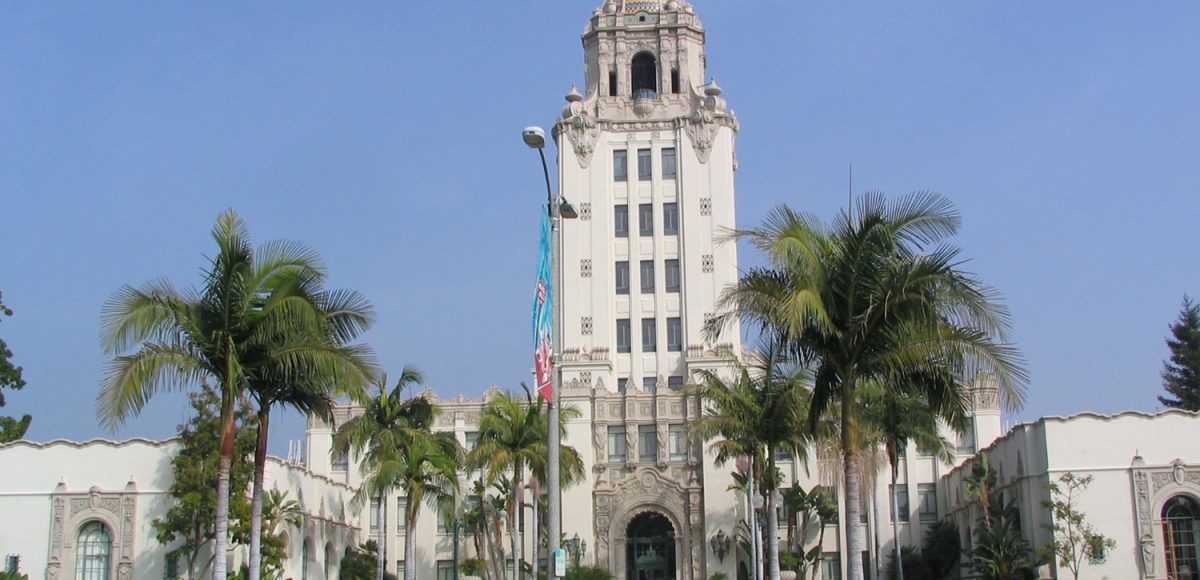Against a backdrop of civil unrest, mounting economic tensions, and a looming national election, the Beverly Hills City Council voted at its Aug. 4 Regular Meeting to allocate an additional $200,000 to the City’s Closed Circuit Television (CCTV) program. At its earlier Study Session, the Council discussed the system’s ongoing expansion, a possible partnership with home security companies Nest and Ring, and other surveillance methods to achieve the City’s goal of “ubiquitous coverage.”
The project dates its origins to 15 years ago, according to a staff report compiled for the Study Session, during which Beverly Hills Police Department (BHPD) presented its plan to create a network of surveillance cameras throughout the City. The plan calls for camera placement in four key areas: critical infrastructure, such as public safety facilities and reservoirs; places of high crime, like intersections in commercial areas; locations with “a perceived need for additional security,” like schools and parks; and residential areas.
While the resulting Community Security Enhancement Program initially set out a time frame of 1,000 cameras in 20 years, “the growth of the program has been exponential over time,” Assistant City Manager Nancy Hunt-Coffey briefed the Council. “Up until about 2018, the number of installations averaged about 50 cameras a year. The program accelerated exponentially from then.”
According to the staff report, the City currently has 1,515 CCTV cameras, 254 of which were installed last year, Hunt-Coffey said.
The current review of the program came at the request of Councilwoman Lili Bosse.
“Over the last year or so, I’ve had many residents ask me about where the cameras are on their street when they see it available on other streets,” Bosse said. “We’ve certainly seen that it’s been a positive thing to have in our community.”
In January, the City Council directed the Community Security Enhancement Program to accelerate its expansion into residential areas and approved a budget of $500,000 for the year. The amount later grew to $1.2 million, even as the City faced a budget deficit due to COVID-19. On Aug. 4, the City Council allocated an additional $200,000 with the hopes of achieving its goal of 200 cameras by the end of the year. This would bring the City up to a total of approximately 1,700 cameras.
Most of the 200 cameras will be placed in residential areas, including the Southwest, the Southeast, the Flats, and east and west Coldwater. More recently, the BHPD identified newer priority areas. “These locations were identified as the result of the recent protests that took place within the City,” the staff report reads.
“Is there a number that would be considered to be an appropriate number of cameras for a community of our size?” Councilperson Dr. Julian Gold asked Hunt-Coffey. “What are we headed for?”
Hunt-Coffey responded that the project aims to achieve “ubiquitous coverage.” She laid out the program’s five-year plan. “It is not a cheap proposition,” she noted. “It’s about a $14 million project, which would roll out about 900 additional cameras. That would essentially put cameras at pretty much every intersection in town.”
The City Council also considered integrating emerging technologies into the City’s surveillance apparatus. Councilman Gold suggested using artificial intelligence to monitor the footage 24/7–something either impossible or financially unfeasible to do with human beings. “I think we should be at the front of that,” he said.
The concept of merging AI with police surveillance has come under criticism in recent years, however, in studies by the National Institute of Standards and Technology (a Department of Commerce Agency) and others.
Discussion at the Study Session also considered incorporating home surveillance systems into the program.
“We’re exploring partnerships with private camera providers like Nest and Ring,” Hunt-Coffey told the Council.
Beverly Hills Deputy City Manager Gabriella Yap formerly served as Deputy City Manager for Ranchos Palos Verdes. She spoke of that’s city’s involvement with Ring as a potential model to emulate for Beverly Hills. “We negotiated a discount [with] Ring, as well as the city gave an additional incentive, or subsidy, to the residents to incentivize them to purchase these products,” she explained. “And through that, they would share footage with the police department if there was suspicious activity.”
Additionally, Hunt-Coffey said, the City is exploring the possibility of “integrating in cell phone video that can stream into our CCTV system.”
The Council brought up multiple success stories from over the years that showed the system’s effectiveness in combating crime – most notably, the vandalism of Nessah Synagogue. The suspect in that case was apprehended after CCTV footage showed him leaving the synagogue and getting into a cab.
Other cities around the world incorporate CCTV cameras into their law enforcement toolkits. London, for instance, has some 420,000 CCTV cameras, according to Financial Times, making it the second-most surveilled city in the world after Beijing, which has 470,000.
Asked by Councilman Robert Wunderlich to compare Beverly Hills’ CCTV system to that of other cities, Chief Information Officer David Schirmer did not mince words. “I would argue that our system is on par with any system in the world,” he said. “In terms of per capita cameras, we certainly are leading the pack.”







